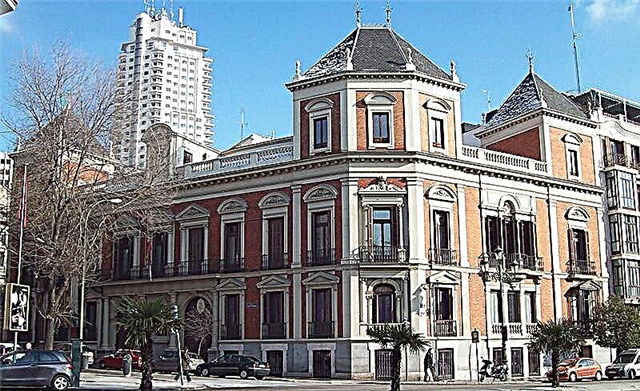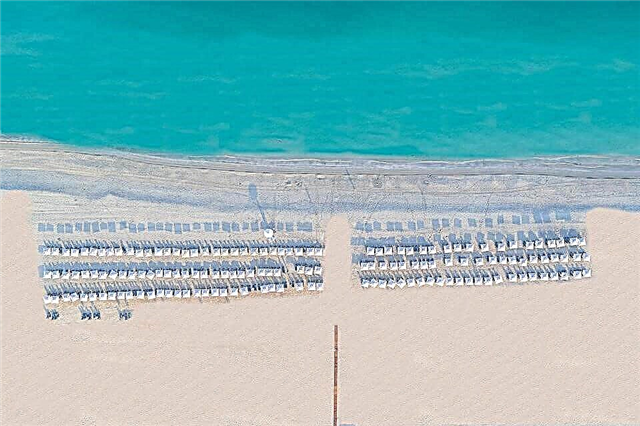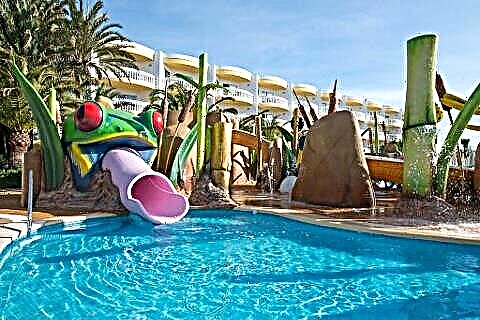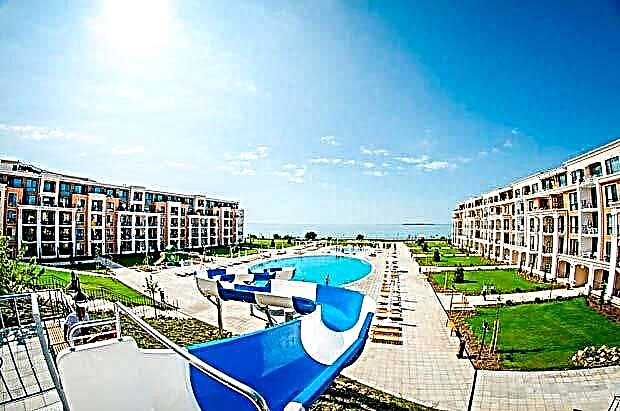Address: Estonia, Tallinn, st. Vienna
Project author: Luigi Rusca
Coordinates: 59 ° 26'20.4 "N 24 ° 44'56.2" E
Content:
Short description
Among the dense medieval buildings of Old Tallinn, you do not immediately notice the classic building of St. Nicholas Church, sandwiched against the city wall, between residential buildings.

View of the Church of St. Nicholas the Wonderworker from the north
But crossing to the other side of the narrow street of Vienna (Est. Vene - Russian), you can admire the Nikolskaya Church in all its glory. The building, crowned with a dome with an Orthodox cross, suddenly appears majestic against the backdrop of houses with red-tile roofs. Behind the doors of the temple, in every object, be it ancient icons in massive frames or brass candlesticks darkened with time, one can feel the spirit of antiquity. As the oldest Orthodox church in Tallinn, St. Nicholas Church dates back to 1030when Prince Yaroslav the Wise seized the Livonian land and set up a Russian trading yard for visiting merchants in Kolyvan. In this merchant center, Novgorod merchants erected a small wooden church, consecrating it in honor of St. Nicholas, patron of merchants and sailors. The fire of 1433 destroyed the Russian courtyard and the temple, which stood on Brokusovaya Hill.
In the 1440s, St. Nicholas Church was rebuilt, but not on a hill, but in the Lower City, on Vienna Street, where it is located to this day. In the 15th century, the street was still called Monastyrskaya, but in 1525 the authorities of Tallinn, who supported the ideas of the Reformation, expelled the Dominican monks from the city. After the abolition of the monastery, the name "Russian" was assigned to the street. With the accession of the Swedes to Estonia, St. Nicholas Church was persecuted and devastated, parishioners were forbidden to arrange religious processions. In 1542, Nikolsky Church was turned into a military hospital, and during the Livonian War (1558-1583) it was completely closed. Soon, Russian trade fell into decay, as Tsar Mikhail Fedorovich considered leaving abroad a betrayal, reproaching the merchants for not helping the zemstvo militia of Minin and Pozharsky in the fight against the Polish invaders. Some merchants still managed to get a travel certificate, and when they arrived in Tallinn, they stayed at their courtyard. In the absence of merchants, the Nikolsky temple was closed, and the keys to it were kept in the city hall. Without constant care, the ancient merchant church fell into disrepair. Frequent but minor repairs and royal gifts that adorned the interior could no longer save the building.

View of the church from the south
Architecture and relics of the Nikolsky temple
With the annexation of Estonia to the Russian Empire, everything changed. In 1804, when Emperor Alexander I arrived on a visit to Revel, the headman of St. Nicholas Church, Parfeny Chesnoev, turned to the sovereign with a request to rebuild the new church. And although Russia at that time was waging wars that devastated the state treasury, the emperor ordered measures to be taken. In the same year in the capital of St. Petersburg the project of the Italian architect Luigi Rusca was highly approved, according to which the new church was planned to be built in the classicist style, with galleries and intricate decor.
But the allocated state funds were clearly not enough for the construction of a monumental, five-domed church. Provincial architect Bantelman finalized the project, and On June 25, 1822, a solemn laying of the first stone took place in the building's foundation. By 1827, the church of St. Nicholas got its modern look... The main chapel of the temple is completed by a high drum, crowned with a large dome, and on the sides of the main facade there are bell towers with a domed covering and walls decorated with pilasters. Nowadays, in the late 1990s, the city authorities of Tallinn have done a lot for the church of St. Nicholas: they restored the facades and interiors, installed stained-glass windows in the drum and altar windows. But the church still breathes with antiquity and spiritual grace. Estonians say that in this place prayed since the 15th century, all the hopes and requests of parishioners who turned to St. Nicholas the Wonderworker for help come true. Among the relics of St. Nicholas Church, the ancient iconostasis, given by John and Peter Alekseevich in 1686, and the silver lamp received as a gift from Boris Godunov in 1599, deserve special attention.

Cathedral domes
The Legend of Metropolitan Arseny
The fate of Metropolitan Arseny is inextricably linked with the name of St. Nicholas Church in Tallinn. When Catherine II carried out a secularizing reform, forbidding the clergy to dispose of land holdings, Arseny openly criticized Catherine's policies. The queen demoted Arseny first to a monk, then to a peasant and imprisoned him in Revel, in a "stone bag" at the Harju Gate. In 1772, going to the Lord, the prisoner asked for the last confession. According to legend, the priest who confessed Arseny saw in the dungeon not a decrepit old man, but a metropolitan in shining robes. The ashes of Arseny were buried near the northern wall of the church of St. Nicholas, but during the rebuilding of the church, his grave turned out to be just above the place where the altar should be. Today, a stone tombstone is installed at the left wall of the church in memory of Metropolitan Arseny.











